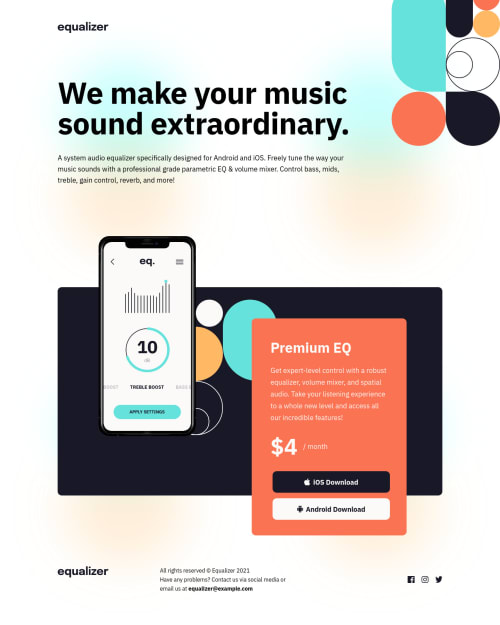Equalizer Landing Page using CSS Grid, Flexbox and CUBE CSS

Solution retrospective
First and foremost, english isn't my first language so please forgive me for any mispellings or grammatical errors.
I had a lot of difficulties on that project.
Part of it was about using CUBE CSS methodology when i have no idea what i'm doing half of the time. My naming convention for class utilities need serious reworking because near the end of that project i had troubles remembering some variable's purpose. The fact that i mixed up some BEM conventions as well only did it worse so in the future i'll be sure to use simple naming conventions which can carry me through from start to end.
Another problem, the biggest really, is how to transition smoothly between different designs (mobile, tablet, desktop). Replicating each individually is one thing and i'm confident i can do it BUT transitionning from one design to the other without it being awkard is totally different and unfortunately i can't seem to manage it without excess use of absolute length units which aren't great at responsive design. And event then, the end result is less than average. If anyone had advices concerning any of theses two problems, i'll gladly accept them.
That being said, that project was a huge opportunity to learn and even if the result is far from great i'm glad i saw it to the end.
Thanks for reading, have a nice day and happy coding to all :)
Please log in to post a comment
Log in with GitHubCommunity feedback
No feedback yet. Be the first to give feedback on Jordan's solution.
Join our Discord community
Join thousands of Frontend Mentor community members taking the challenges, sharing resources, helping each other, and chatting about all things front-end!
Join our Discord